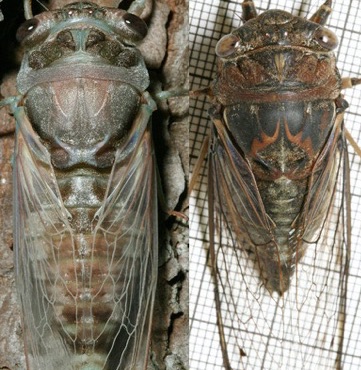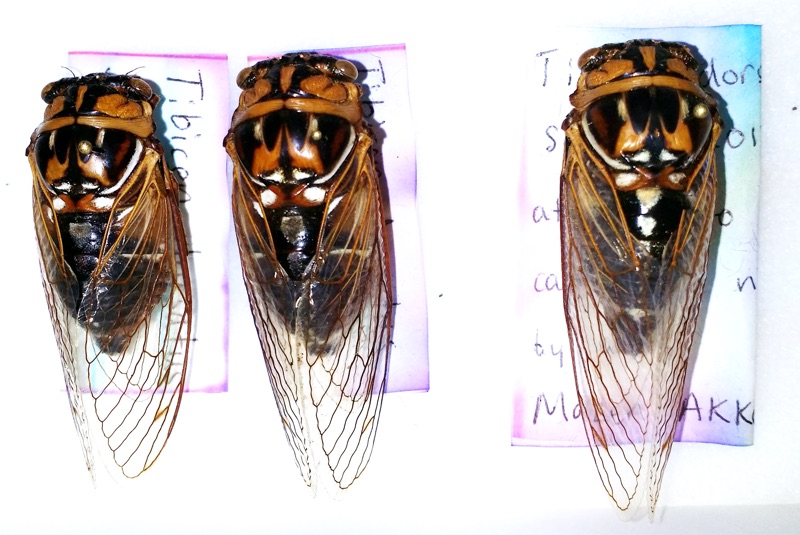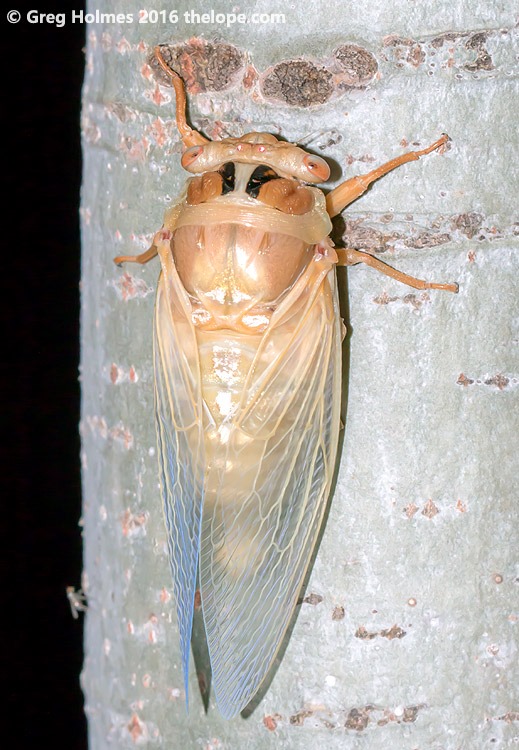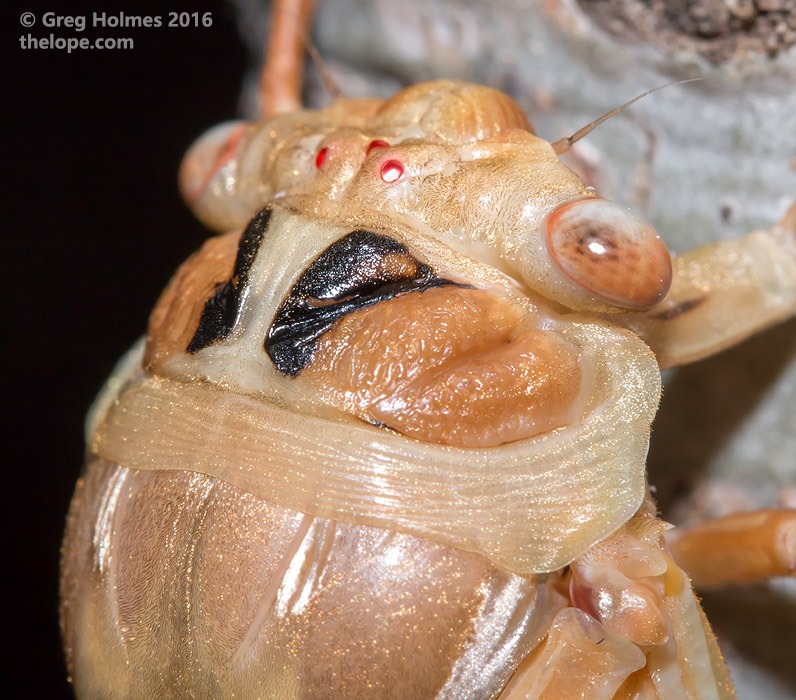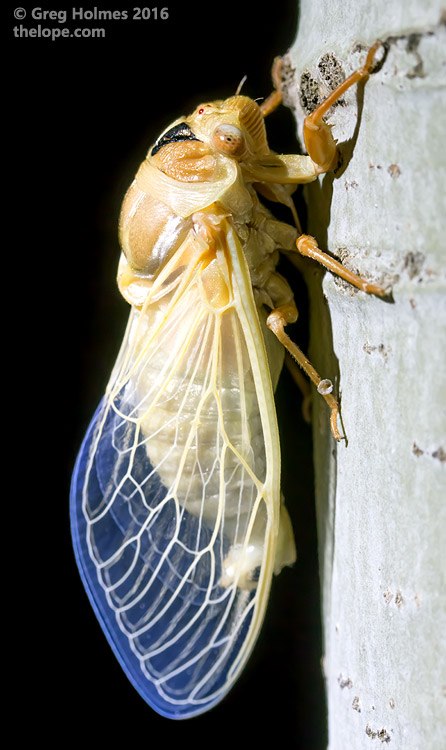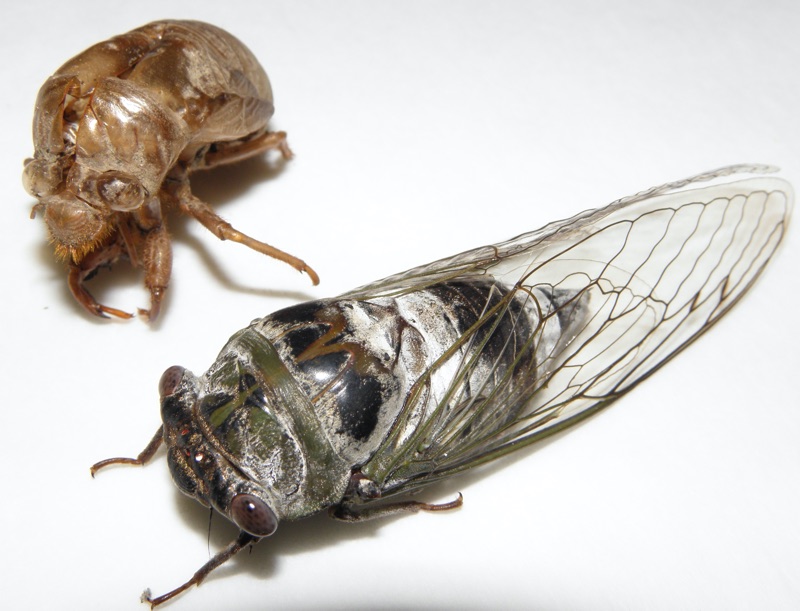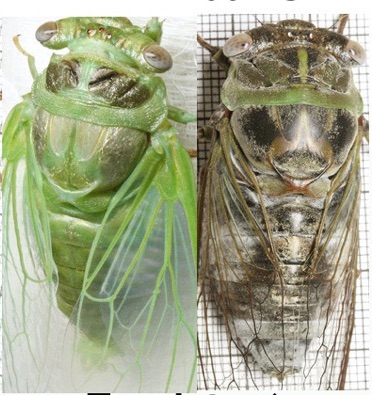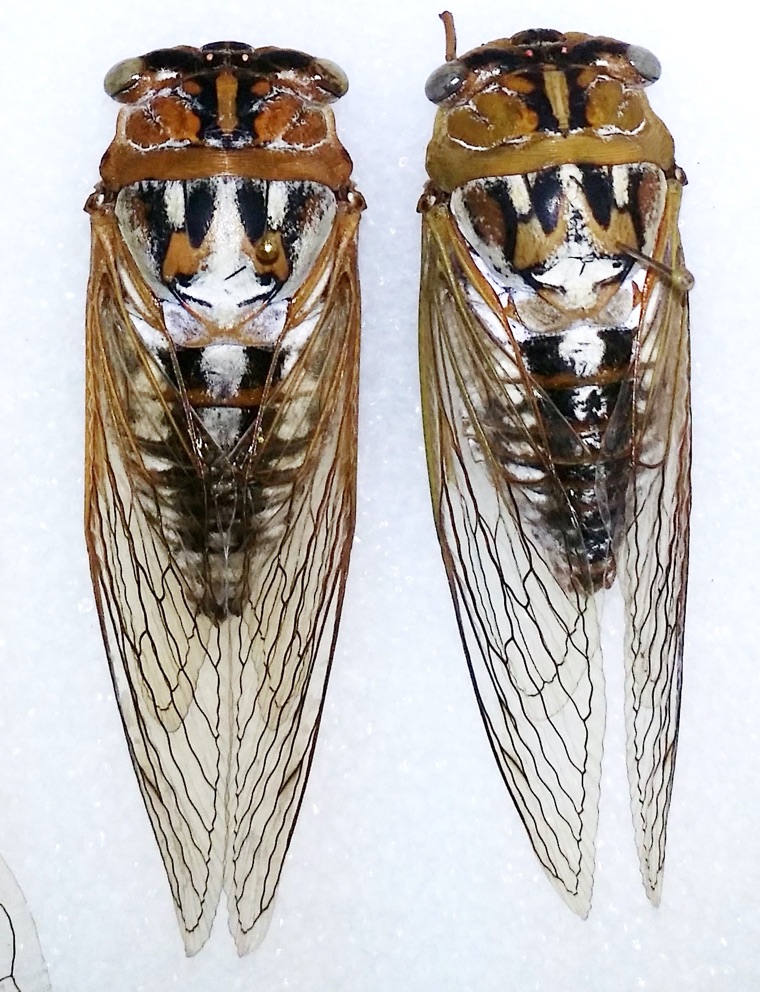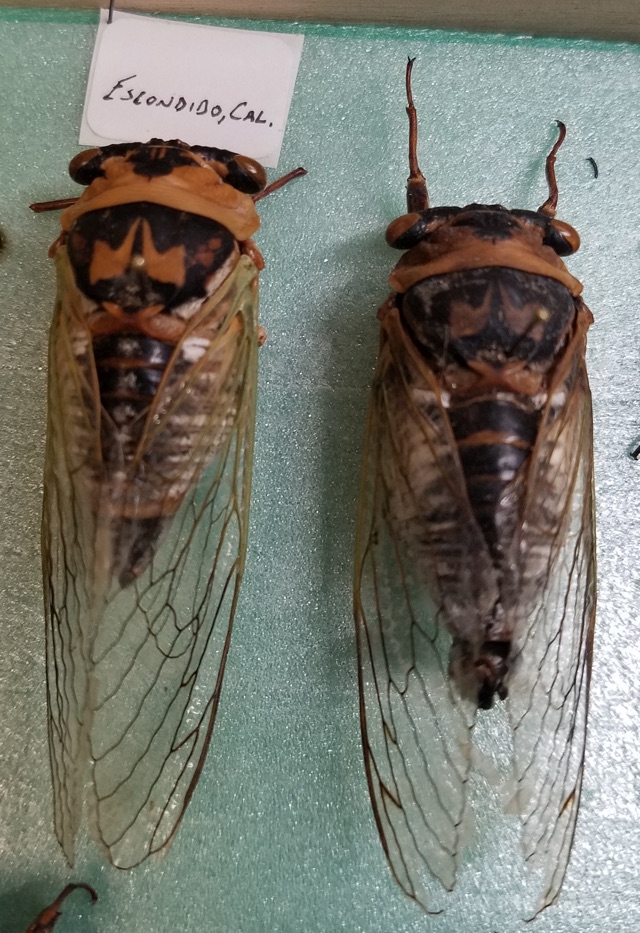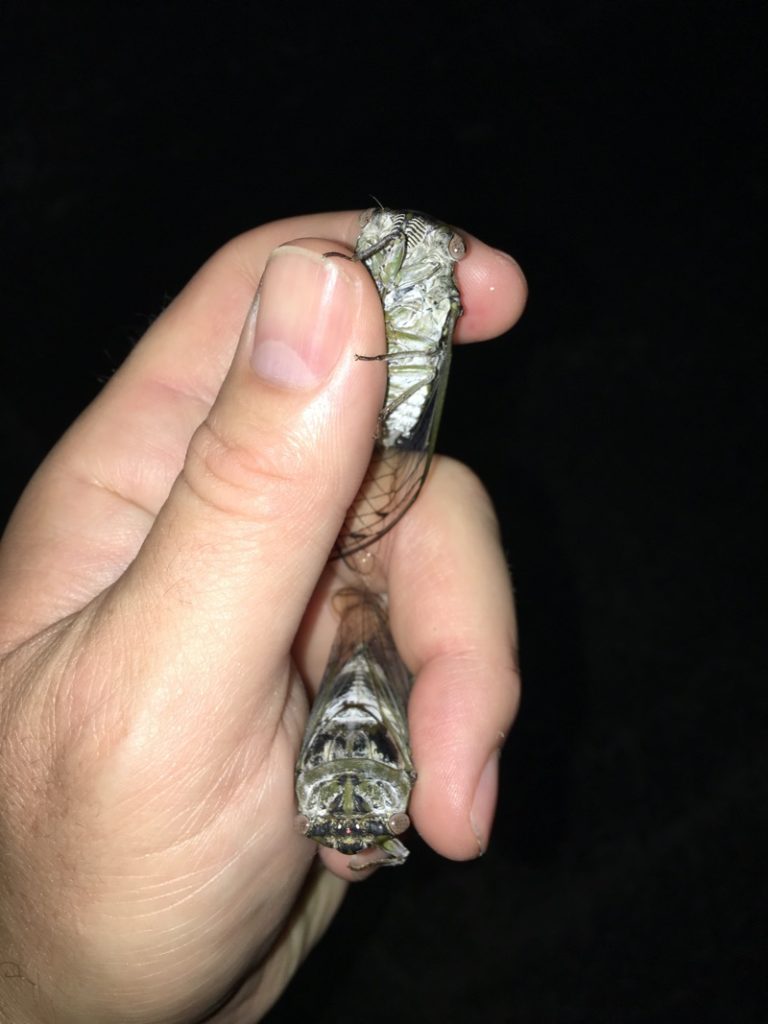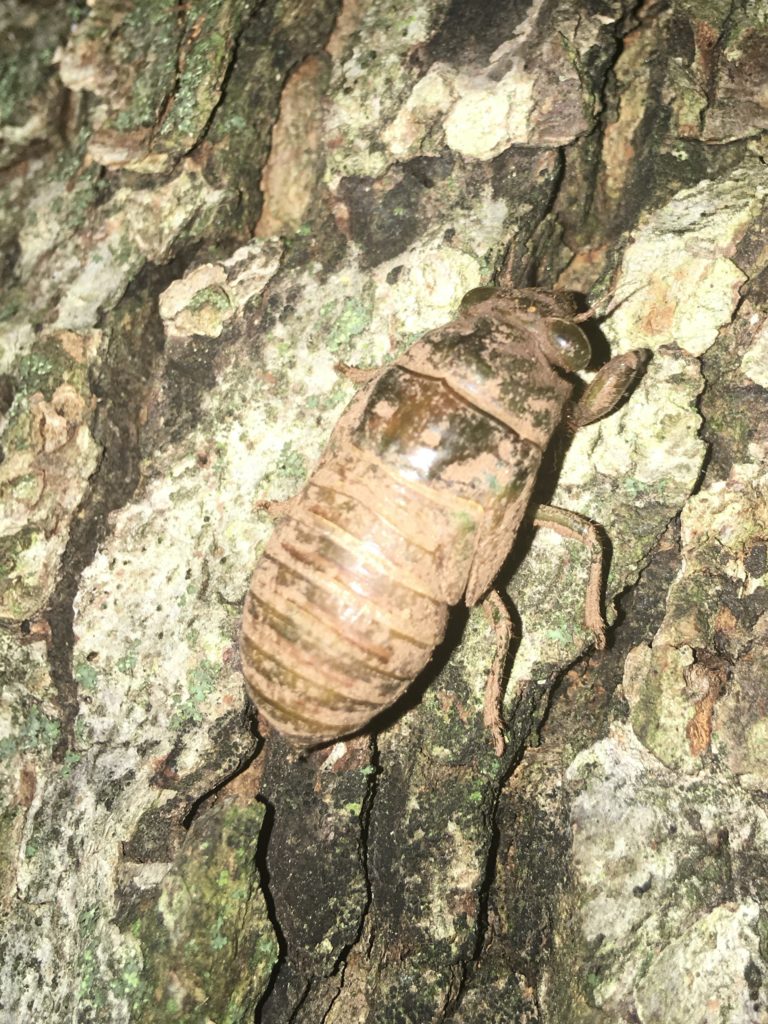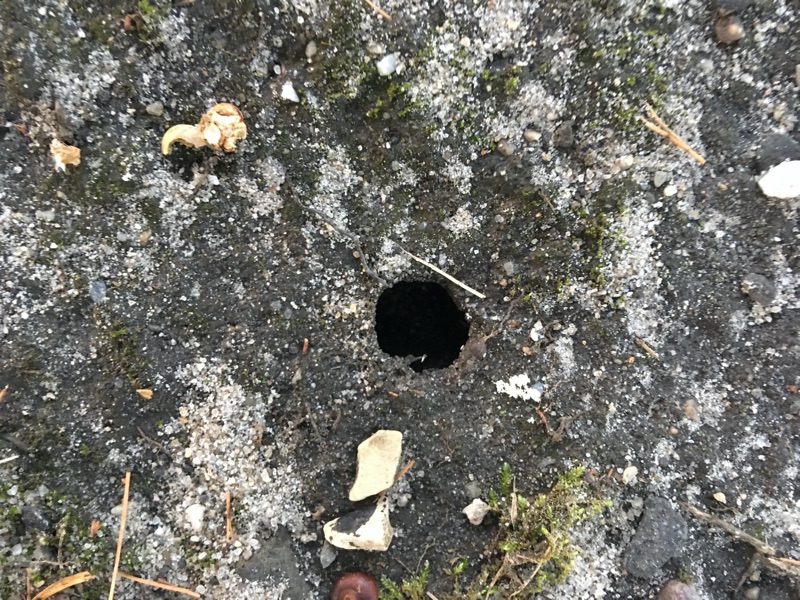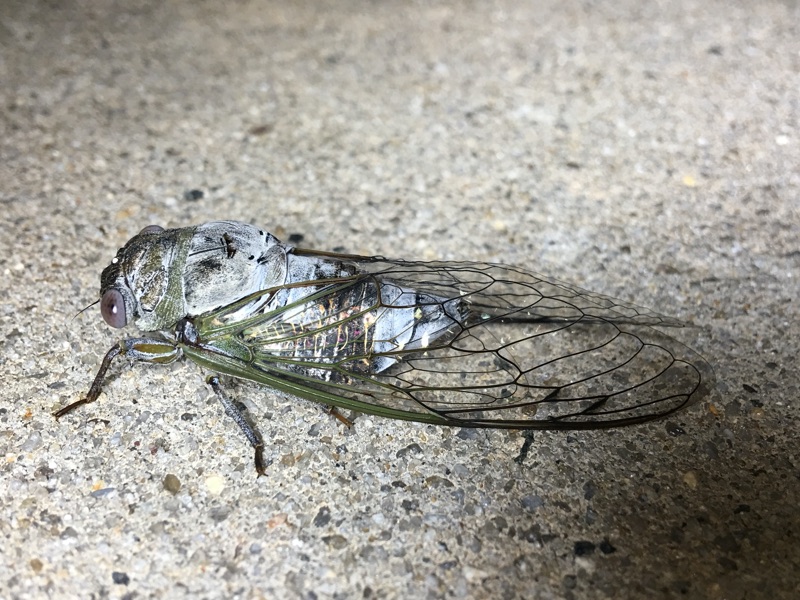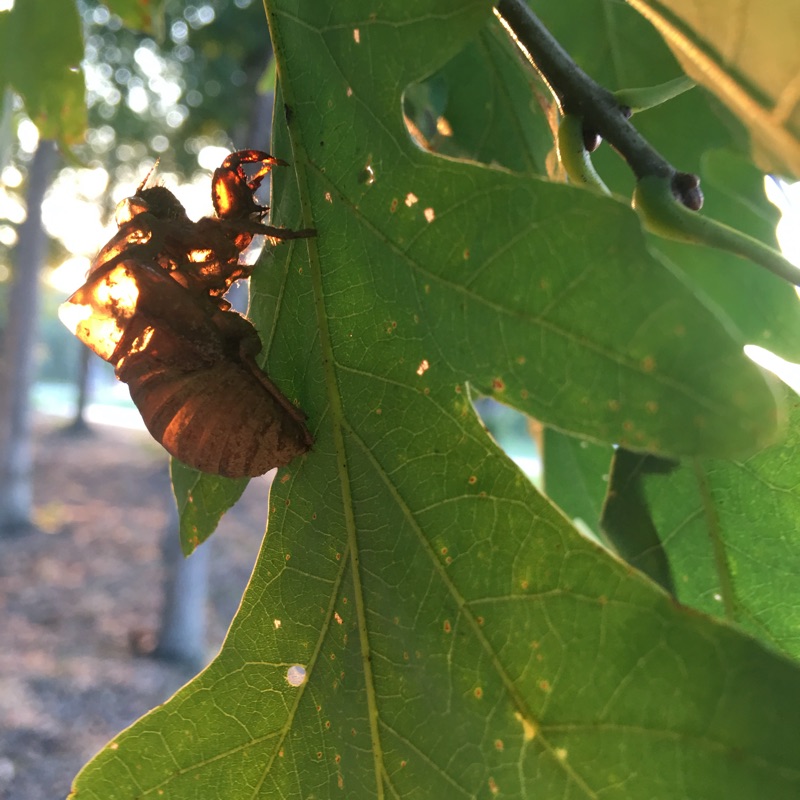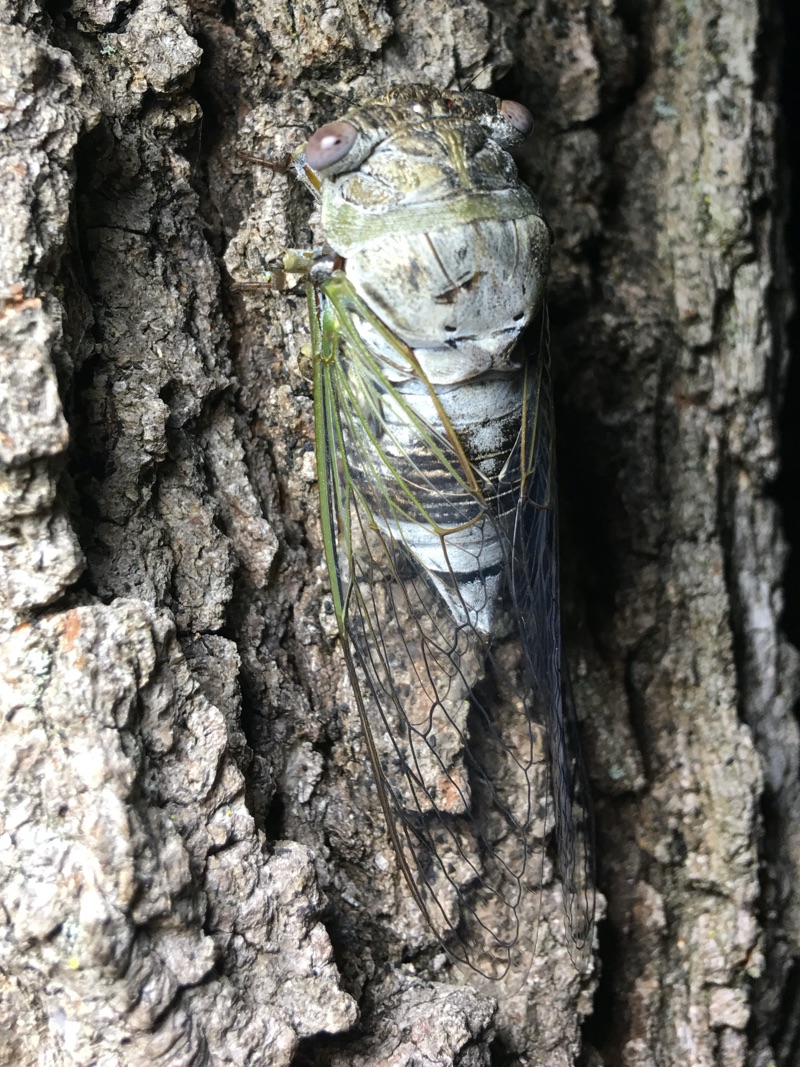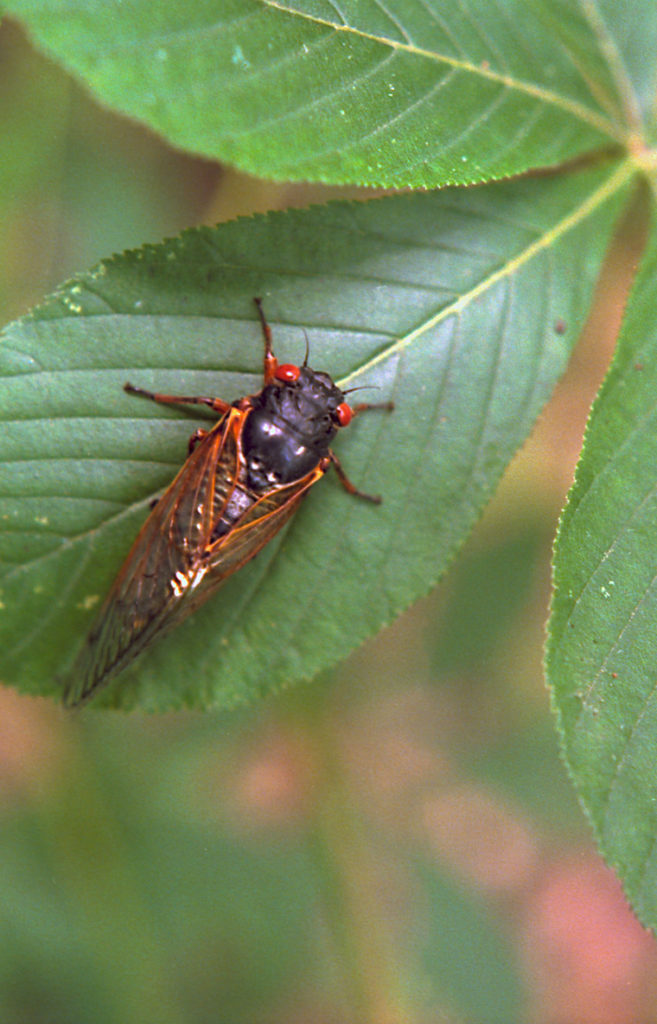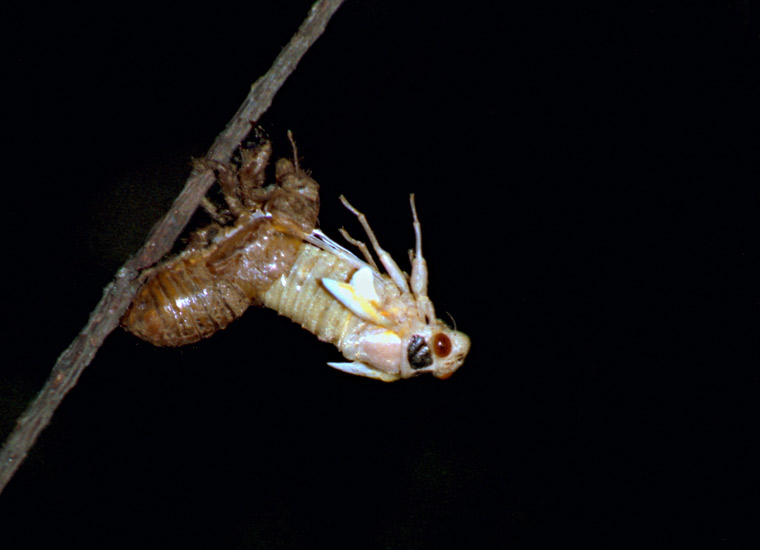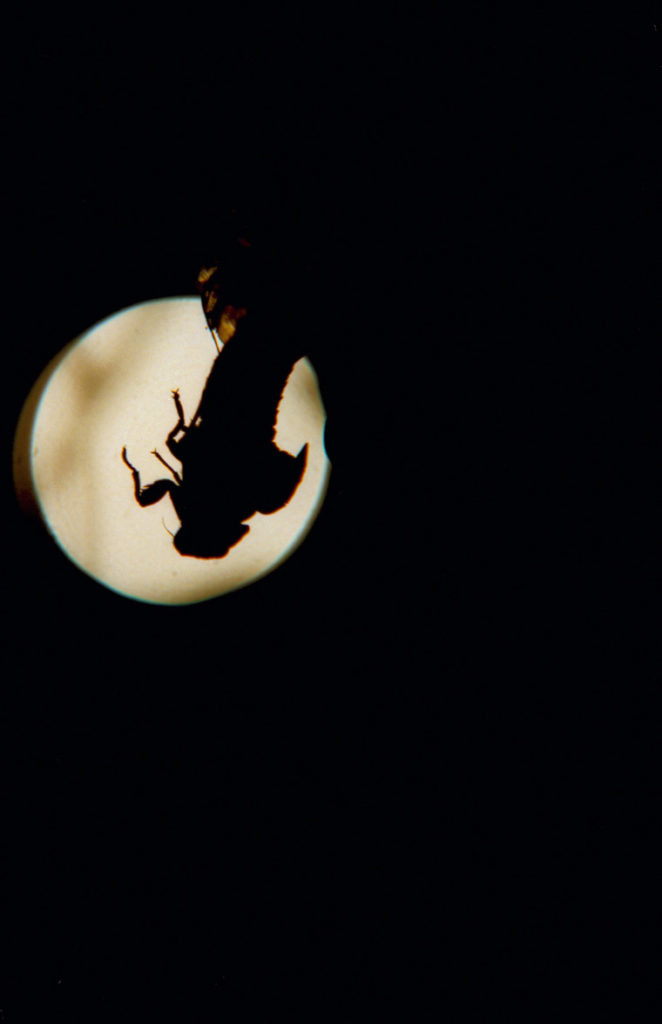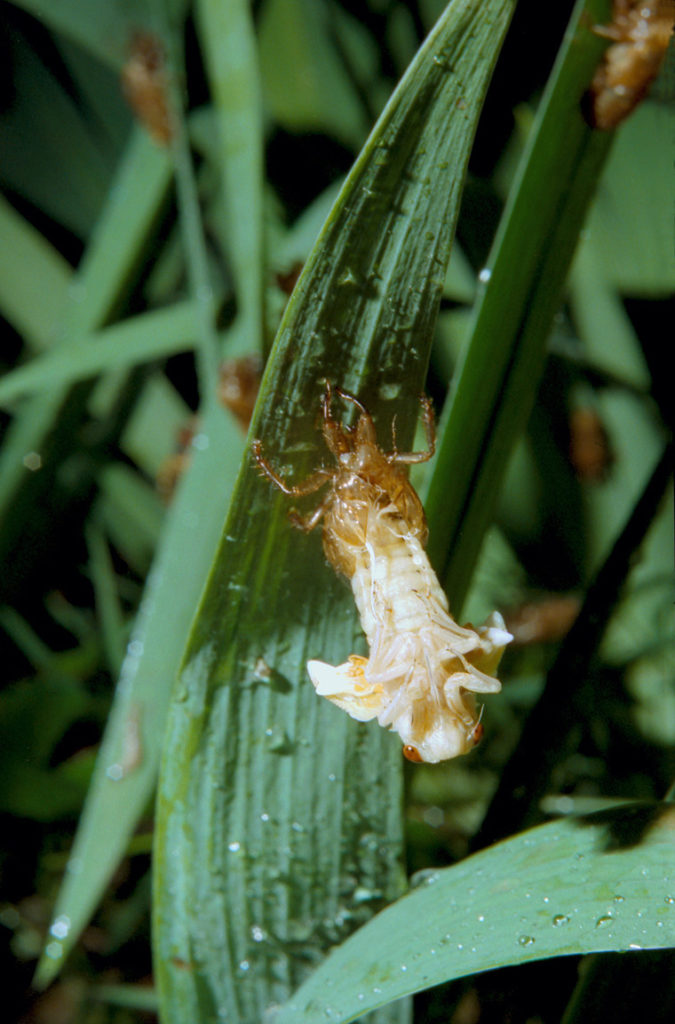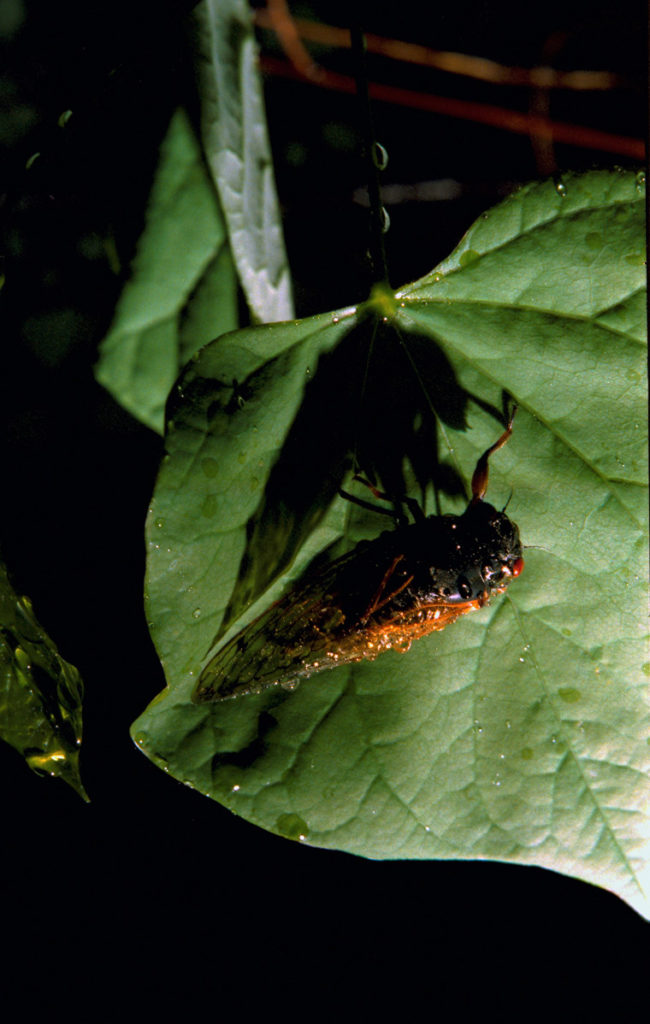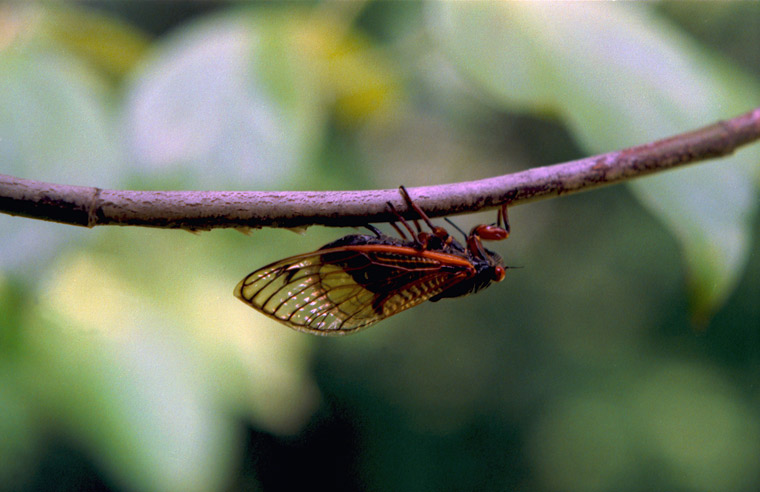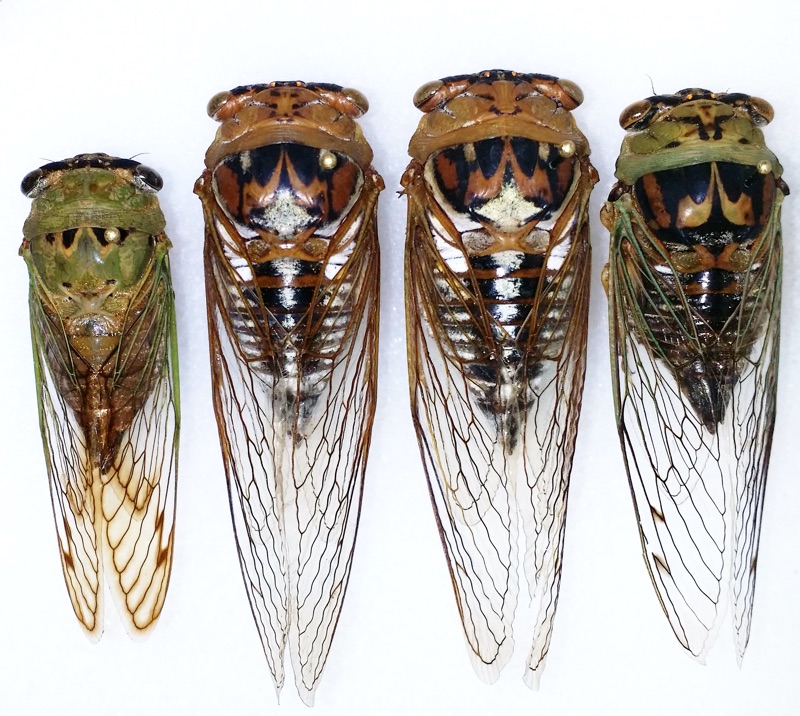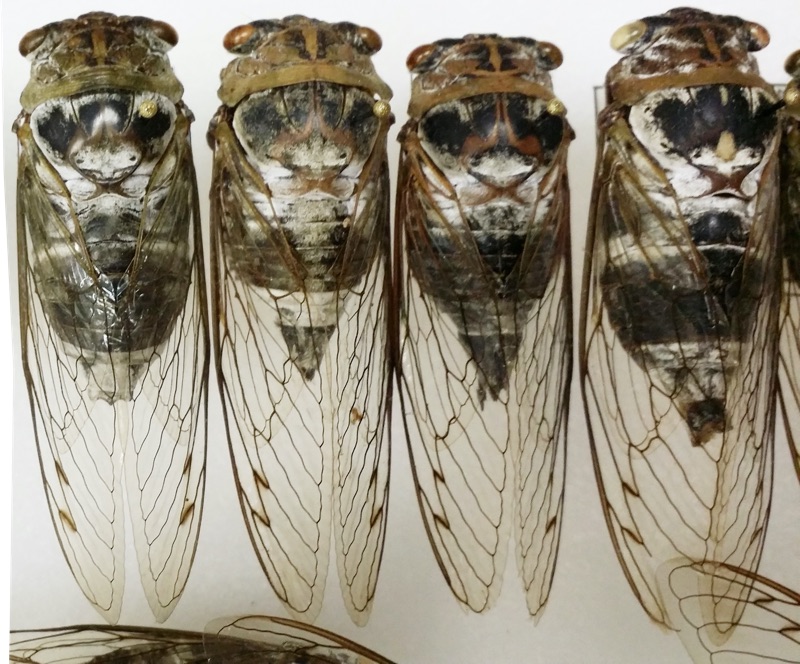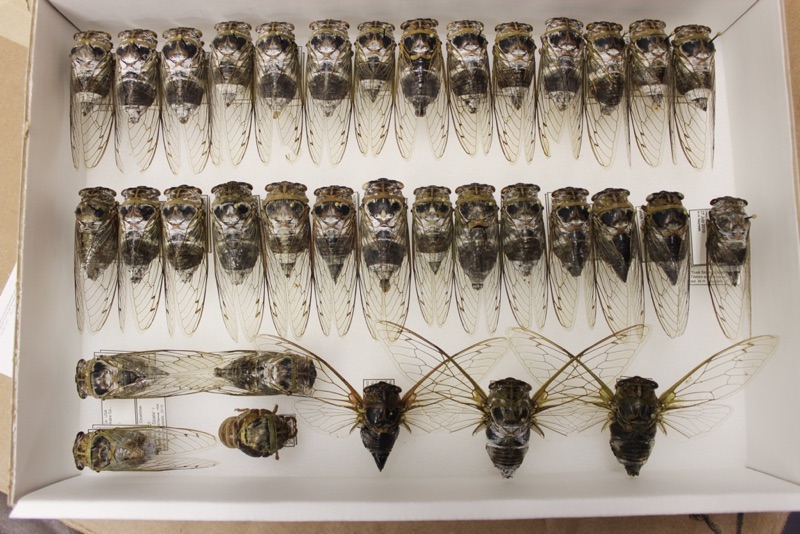Megatibicen figuratus (Walker, 1858) aka Fall Southeastern Dusk-singing Cicada.
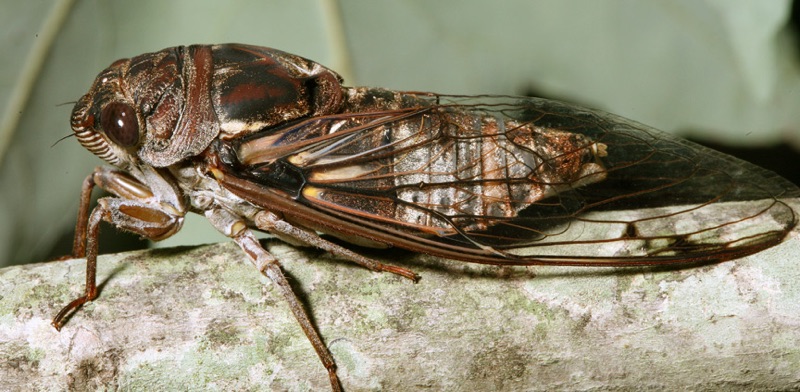
Photo by Paul by Paul Krombholz.
See all Megatibicen figuratus images and information on cicadamania.com.
Song type: Call
Source: ©Insect Singers | Species: M. figuratus.
Video Playlist
Playlists contain multiple videos found on YouTube.
Name, Location and Description
- Cicada Name: Megatibicen figuratus (Walker, 1858)
- Short Name: M. figuratus
- Common Name: Fall Southeastern Dusk-singing Cicada
- Synonym/Former Name: Tibicen figuratus, Tibicen figurata
- When: August-October. Peaks in September.
- Where it is found: AL, AR, FL, GA, LA, MS, NC, SC, TN, TX, VA
- Maps: Biogeography of the Cicadas (Hemiptera: Cicadidae) of North America, North of Mexico [PDF]
- Description: Black and browns. White pruinose.
- Eye Color: brown
- Pronotal Collar Color: brown
- Identification: Bug Guide
- Identification: iNaturalist
- Taxonomic Information: Integrated Taxonomic Information System
- Song: Insect Singers
A description from NOTES ON CICADAS FROM THE UNITED STATES WITH DESCRIPTIONS OF SEVERAL
NEW SPECIES by Wm T. Davis
Cicada figurata Walker.
This species was described [by Walker] in 1858 in List of the Specimens of Homopterous Insects in the collection of the British Museum, Supplement, p. 19. Unfortunately no locality was given. The description in part is as follows: ” Black, mostly tawny beneath. Head with a large tawny spot on each side in front between the eyes. . . . Pro- thorax reddish, black in front and behind, with a double tawny stripe; border tawny, with a black streak on each side. Mesothorax with four oblique tawny stripes; the middle pair recurved inward; the lateral pair enclosed at each of their tips by a lateral tawny streak; sides and hind ridges tawny. Legs tawny. Wings vitreous. Fore wings narrow, much acuminated testaceous at the base, and with a testaceous streak along the sixth discoidal areolet ; primitive areolet black; veins piceous; costa testaceous to the tip of the front areolet; first and second transverse veins slightly curved, clouded with black.
Song and morphological descriptions by Wm. T. Davis from MISSISSIPPI CICADAS, WITH A KEY TO THE SPECIES OF THE SOUTHEASTERN UNITED STATES2
A. Large, heavy bodied species ; head broad, uncus simple, and first cross vein in the fore wings starting from radius 3 far back, or about one third distant from base of first marginal cell.
BB. Uncus broad at the base, triangular in shape and generally about as broad as long. Opercula broad and rounded at the extremities; no definite black area on the central part of the abdomen beneath, usually unicolorus.
E. Wings long and narrow, collar 2 mm. or less in breadth at central portions; dorsum of abdomen black or nearly so.
Basal cell of fore wings often black or nearly so, anal cells of both pair of wings yellowish. Expands about 100 mm figurata (Walker)
A teneral (soft) and sclerotized (hard) M. figuratus
Classification:
Family: Cicadidae
Subfamily: Cicadinae
Tribe: Cryptotympanini
Subtribe: Cryptotympanina
Genus: Megatibicen
Species: Megatibicen figuratus (Walker, 1858)
List of sources
- Davis, W.T. 1916. NOTES ON CICADAS FROM THE UNITED STATES WITH DESCRIPTIONS OF SEVERAL
NEW SPECIES. Journal of the New York Entomological Society. Vol. XXlV, No. I. - Davis, W.T. 1919. MISSISSIPPI CICADAS, WITH A KEY TO THE SPECIES OF THE SOUTHEASTERN UNITED STATES. Journal of the New York Entomological Society, Vol. XXVI, Nos. 3-4. Read on archive.org.
- Full Binomial Names: ITIS.gov
- Common names: BugGuide.net; The Songs of Insects by Lang Elliott and Wil Herschberger; personal memory.
- Locations: Biogeography of the Cicadas (Hemiptera: Cicadidae) of North America, North of Mexico by Allen F. Sanborn and Polly K. Phillips.
- Descriptions, Colors: personal observations from specimens or photos from many sources. Descriptions are not perfect, but may be helpful.
Notes:
- Some descriptions are based on aged specimens which have lost some or a lot of their color.

